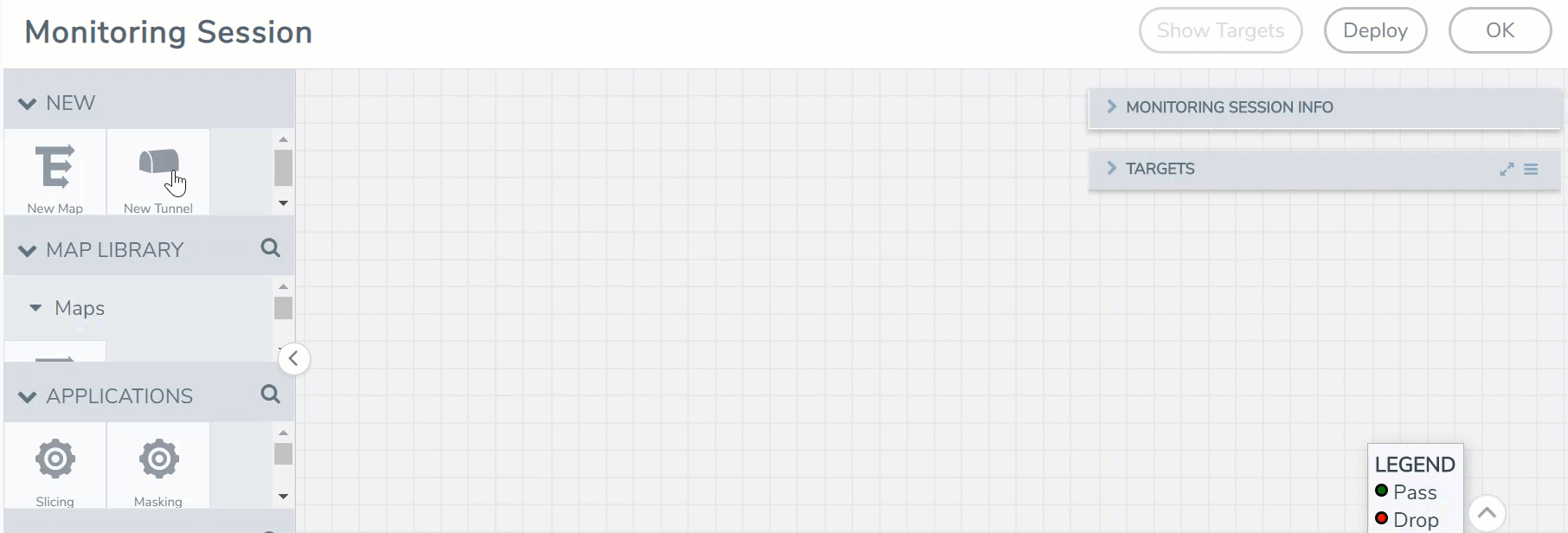Create Ingress and Egress Tunnels
Traffic from the V Series node is distributed to tunnel endpoints in a monitoring session. A tunnel endpoint can be created using a standard L2GRE, VXLAN, or ERSPAN tunnel.
Note: ERSPAN is not supported for AWS solution.
To create a new tunnel endpoint:
- After creating a new monitoring session, or click Edit on an existing monitoring session, the GigaVUE-FM canvas appears.
- In the canvas, select New > New Tunnel, drag and drop a new tunnel template to the workspace. The Add Tunnel Spec quick view appears.

- On the New Tunnel quick view, enter or select the required information as described in the following table.
Field
Description
Alias
The name of the tunnel endpoint.
Note: Do not enter spaces in the alias name.
Description
The description of the tunnel endpoint.
Type
The type of the tunnel.
Select ERSPAN, or L2GRE, or VXLAN to create a tunnel.
Traffic Direction
The direction of the traffic flowing through the V Series node.
- Choose In (Decapsulation) for creating an Ingress tunnel, traffic from the source leader in a bidirectional clock relationship (formerly master) to the V Series node. Enter values for the Key.
- Choose Out (Encapsulation) for creating an Egress tunnel from the V Series node to the destination endpoint. Select or enter values for MTU, Time to Live, DSCP, PREC, Flow Label, and Key.
- ERSPAN, L2GRE, and VXLAN are the supported Ingress tunnel types. You can configure Tunnel Endpoint as your first level entity in Monitoring Session.
- L2GRE and VXLAN are the supported Egress tunnel types.
IP Version
The version of the Internet Protocol. Select IPv4 or IPv6.
Remote Tunnel IP
For Ingress tunnel, Remote Tunnel IP is the IP address of the tunnel source.
For Egress tunnel, Remote Tunnel IP is the IP address of the tunnel destination endpoint.
- Click Save.
To delete a tunnel, select the required tunnel and click Delete.



